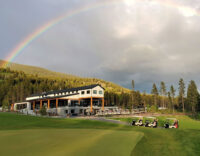Hyggen comments on needs assessment report
By Al Beeber - Lethbridge Herald on March 22, 2024.
LETHBRIDGE HERALDabeeber@lethbridgeherald.com
Mayor Blaine Hyggen has issued a statement regarding a presentation made to the Social and Safety Standing Policy committee of city council Thursday on an Indigenous Womens Needs Assessment.
“The needs assessment report was a tough read, but an important one. It highlights the opportunities we have to do better and provides recommendations on how to get there. One positive outcome we’ve seen since this report was finalized is the valuable partnership work the Blood Tribe Department of Health and the Government of Alberta have been doing with the shelter,’ said Hyggen.
“The supports and resources for at-risk Indigenous people in the community have improved thanks to their involvement. It is also encouraging to see that this work aligns with the recommendations made by Dr. Weasel Head and helps confirm we’re on the right path forward.
“We look forward to learning more and continuing this important work and improving outcomes for Indigenous women and girls in Lethbridge,” added the mayor.
Hyggen says for the past five years city council has been working to understand how it can do its part in providing better supports for Indigenous women and girls in Lethbridge.
At the direction of council, the report by Gabrielle Weasel Head, forms part of the Missing and Murdered Indigenous Women’s and Girls (MMIWG) Workplan that council approved in 2021.
The final 53-page report was submitted in December of 2022 to the City of Lethbridge Indigenous Relations office.
9-8





The Missing and Murdered Indigenous Women’s and Girls (MMIWG) report found many of the issues were Indigenous against Indigenous.
Their way of life has caused the majority of these issues and until they acknowledge this and quit accusing every other person for their fate, they will keep on encountering societal issues.
As a downtown business owner, I’ve experienced some of the worst racism from Indigenous people themselves. When you ask them to move away from your doorway, they call you racist for asking while others say we are on their land and call you colonialist! They are moved along because of their lawless behavior, not their race.
As we work toward reconciliation, are we redefining racism as we did reconciliation? Are we abusing this word?
We have all grown weary of this and if it doesn’t change, we will see racism grow! Accusing others only builds walls!
I applaud the this City Council and administration for all the hard work and effort they have put in to work with the Indigenous. After working at City Hall for awhile, there are many efforts/actions the public are not aware of taken by this city to work with the Indigenous and often they are unfairly attacked.
I would like to remit a comment I made a couple of years ago of what reconciliation used to be:
Reconciliation is about healing a relationship after a wrong or a hurt has been done. It is a process between two or more people or among groups of people. The six steps of reconciliation are:
1. The person who hurt needs to acknowledge the hurt done to the other person. Until everyone is effective with this skill, this will require assistance from a parent. The hurt person might need to be encouraged to state how he or she feels and the effect the hurt had for him or her.
2. The person who hurt needs to accept responsibility without excuses or blame. The person who hurt needs to take this responsibility with heartfelt understanding of the hurt done. Again, this will require coaching and support from a parent.
3. Next, the person who hurt must apologize and ask the hurt person for forgiveness. This again must be heartfelt and come from an understanding and acceptance of the effect of their actions on the other. This might also include a promise of not doing this again.
4. Now, the hurt person must be willing to end the problem by accepting the apology and giving forgiveness. The hurt person might also be thankful for the apology and the opportunity to have their feeling heard, understood and that the other person accepted responsibility for his or her actions.
5. The person who hurt now must compensate the person he or she hurt by making the hurt better in some way. If some property was damaged (for example, clothing torn in a scuffle), the person who damaged it might repair it. If the person’s feeling were hurt, a small gift or act of kindness will begin to repair the relationship.
6. Finally, one of the most important steps is that both individuals need to acknowledge that the hurt is over and that it needs to be put in the past. Talk about the incident should focus on giving and getting forgiveness, not about the hurt that was done.
I am so glad that I am not someone who sits on Council or in one of the committees.
I personally believe the city has worked hard, but there are some militant agitators who we will never be able to please.
One thing I like about Alvin Mills, who has worked hard to save lives is his compassion, respect for all, not blaming others but trying to find solutions and even though I don’t agree with his camp plans near Kipp, I believe it should be at Standoff, and it is why I attended the ceremony last year when it opened at the campground there. I have a lot of respect for this person and believe there should be a position for him in the treatment and healing process of the addicted and he understands that ‘you get more flies with honey than vinegar’.
I am sorry but I just do not have any patience left for the radical militants who negatively impact the process of reconciliation. Our leadership has worked hard to build relationships with the Indigenous!